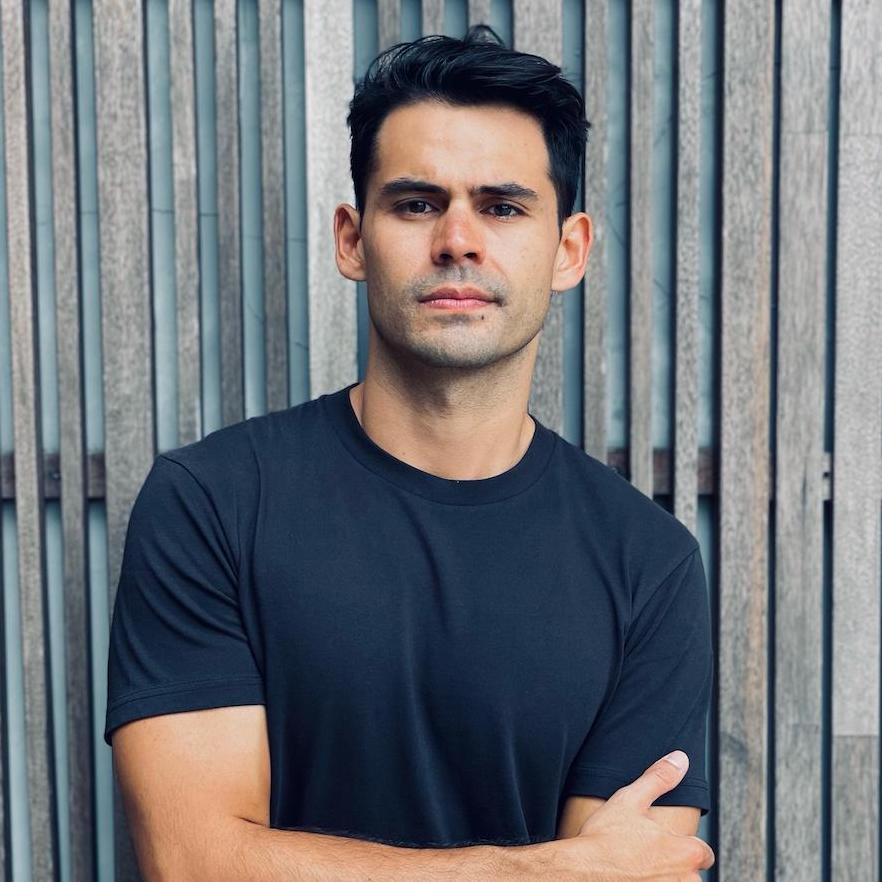If you’re looking for an easy-to-access activity, one that takes you into the heart of nature and gives you a new way to see Bali, then a boat trip through the Kedonganan mangroves may just be the ticket.
Blessed with a range of environments and landscapes, Bali continues to be a haven for those who love the outdoors and actually, you needn’t venture too far afield to find outdoor explorations. Even along the island’s more developed south coast, hidden amidst the urbanisation, you’ll find some reprieve among the bounties of Mother Nature.

Stretching from Serangan Island all the way down to the edges of Tanjung Benoa is a dense mangrove forest. Facing east towards the bay of Benoa, the forest protects the coastline from the sea’s erosive caress. Known officially as ‘Taman Hutan Raya Ngurah Rai’, the mangrove forest takes up a vast area of 1,373 hectares. In quiet resistance to the built environment around it, the mangroves continue to nurture an array of coastal flora and fauna, a haven and habitat beside the busying roadside.
The mangrove forest is no secret, of course. A walkway through the mangroves is found off the Sanur Bypass, a popular activity for residents looking for a shady stroll under the leafy canopy.
Less known however is the experience offered over at Kedonganan. This area is more frequented for its west-facing coast, on Kedonganan Beach. Here the local fish market and seafood restaurants create a bustling atmosphere, and the long-stretching beach connects to Jimbaran Bay, sharing the same iconic sunset scene. On the other side of the bypass however the east-facing coast of Kedonganan hasn’t enjoyed quite the same popularity.
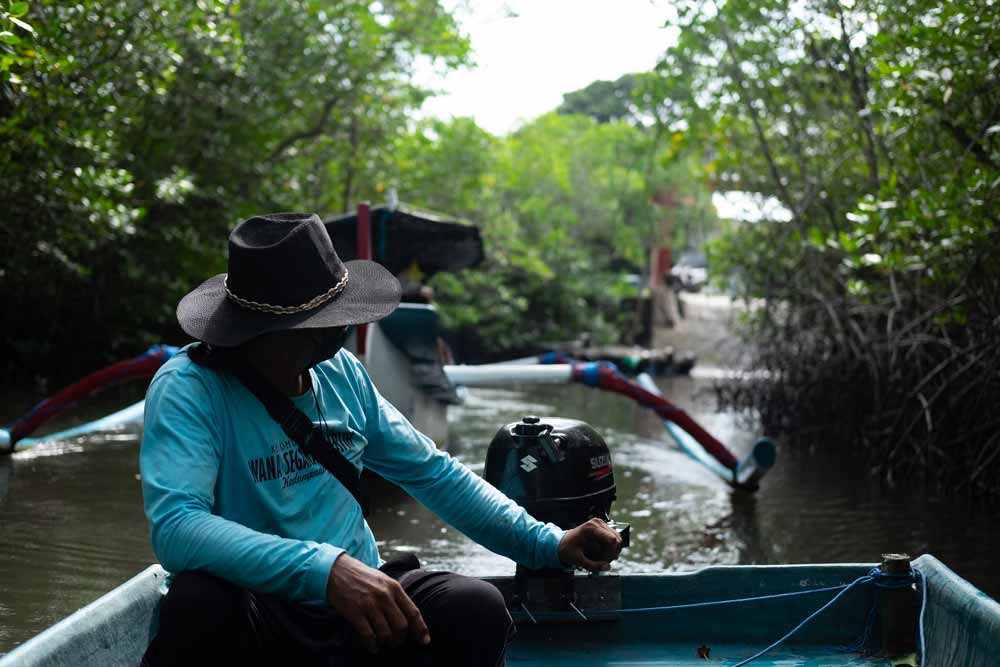
“Kedonganan’s west coast is always crowded and filled with rows of restaurants and cafes – while the east coast has always been empty,” shared Kadek Indra Wijaya in a previous interview with NOW! The east coast is dominated by thick mangrove forest and has long been the harbour for around a hundred local fishermen under the Wana Segara Kertih cooperative, founded by Indra’s father.
Seeing the potential of the forest, Indra mobilised the cooperative during the pandemic to clean the area of litter and plastic waste. Together they established tours to show people the magic of their mangroves, which has helped to give the fisherman an alternative source of income in these challenging times.
The entrance to Wana Segara Kertih is found down an unsuspecting alley of the main Ngurah Rai Bypass. A huge sign shouting ‘Wana Segara Kertih’ announces if you’ve found in the right place. Here, just beyond the sign, your trip into a maze of mangrove awaits.

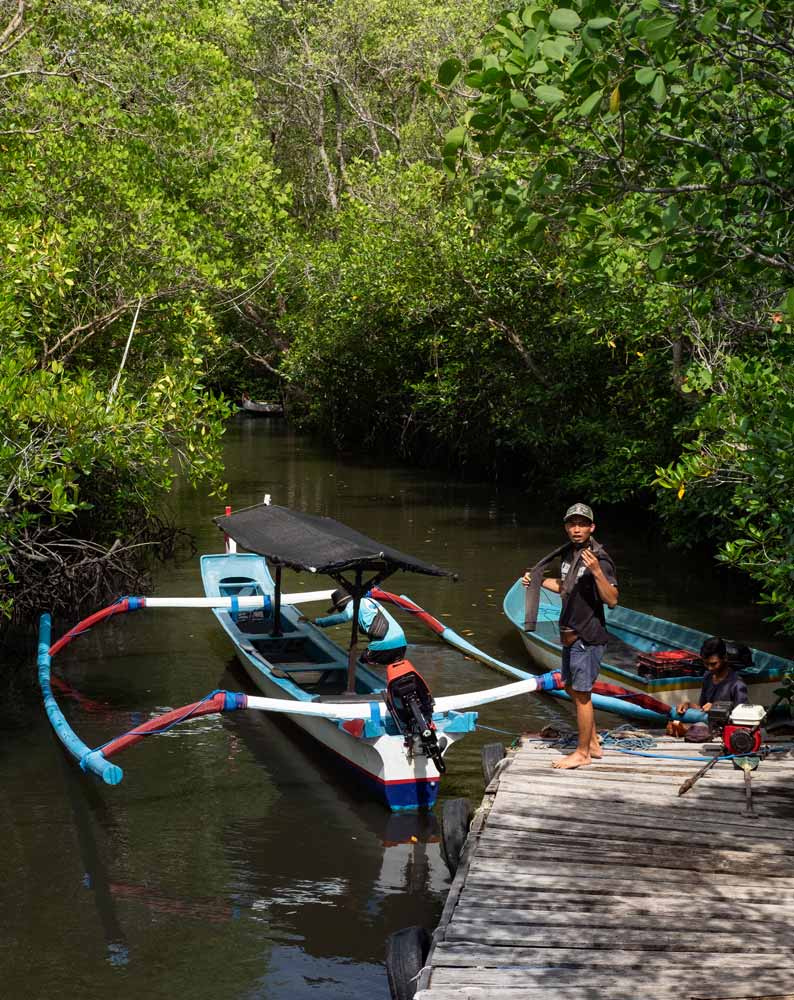


The tour is taken in a traditional jukung catamaran, the actual boats used when the fisherman go out to sea at night. Seated in the jukung, you will cruise smoothly through the narrow, shaded path between the mangroves, before the tributary opens up to a wide, expansive estuary. Surrounded only by the verdant and densely-packed mangrove trees half-sunk in the sea, with the boat chugging softly through the waters, the atmosphere resembles what being deep in the Amazon or Kalimantan forest might feel like. Totally immersed within the realm of nature.
Spluttering along slowly and peacefully, taking in the scenes, our guide Wayan Suta offers some local insight into the area. He points at traps set up by the fishermen to catch local prawn; shares recent efforts in planting young mangroves; how the birds once disappeared, nesting elsewhere, when the forest was polluted and not looked after.
There are 33 species of mangrove found within the whole stretch of forest, and as many know mangroves are important for coastal wildlife to thrive. Research has recorded up to 90 species of birds throughout Taman Hutan Raya Ngurah Rai, from the Cerulean kingfisher to the chirping Javan munia. The most visible are the variety of herons and egrets, many of which nest and breed in the area. They come swooping in dramatically from the mangrove canopies across the waters, in their white, grey and even black feathers.

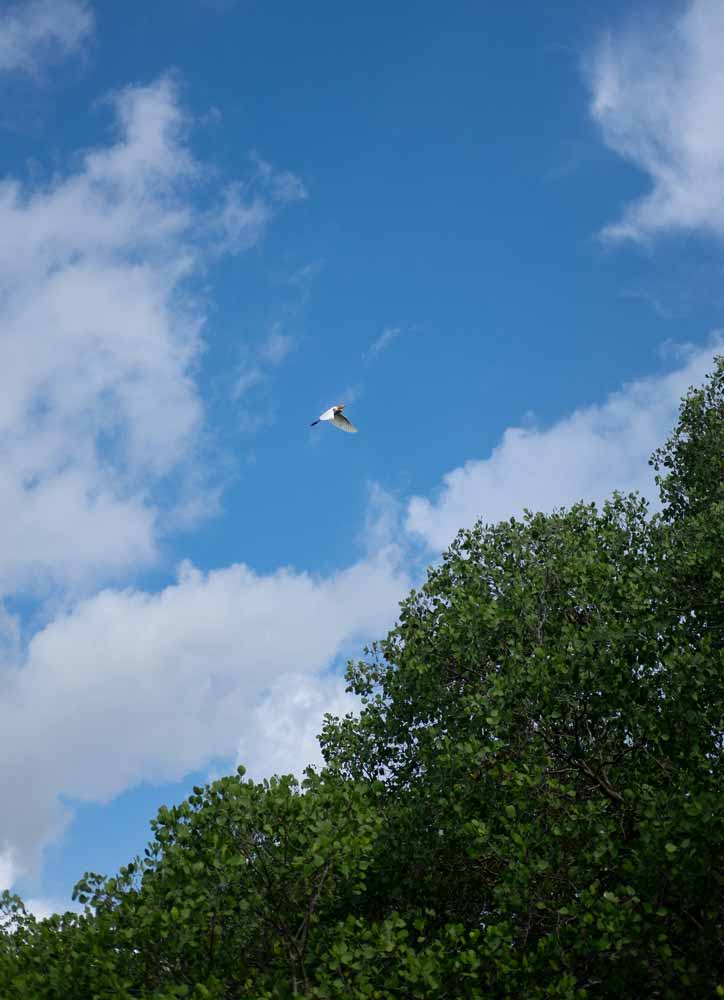
The tour will take you to ‘Bird Point’, as the local fishermen call it. An area of the mangrove only accessible by a smaller speedboat, in which everyone must pile into as it squeezes between the branches to get to these hidden nooks and bays. Inside, a flurry of squawking herons and egrets nest and flap and feed, comfortable and undisturbed in their natural habitat.
From the tightly closed corners, the next part of the tour takes you to the great wide open: Benoa bay. It’s a rare experience which brings you under the Mandala Tol Road, cars zipping on the bridge above you as you skip across the still sea waters below. The fishermen will bring you across to Tanjung Benoa, the Benoa Harbour then back towards the mangroves of Kedonganan. If you’re lucky you may spot a plane coming in to land, and on a clear day the GWK Statue stands visible in the distance. Out here on the waters of Benoa, you’re given a new and unique perspective of Bali’s coastline.
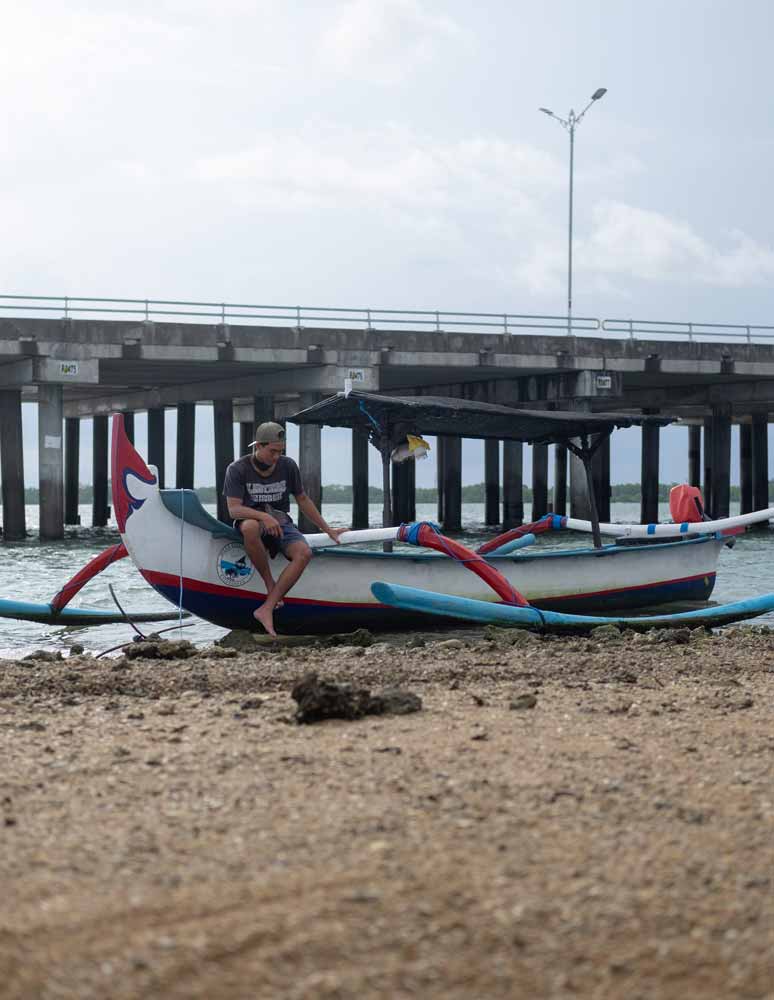
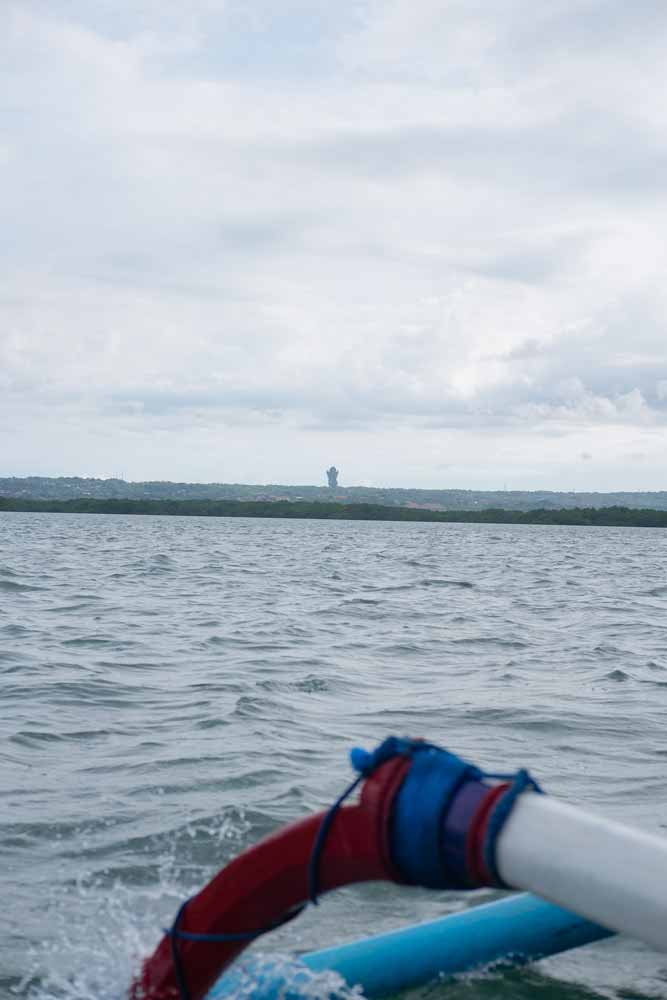
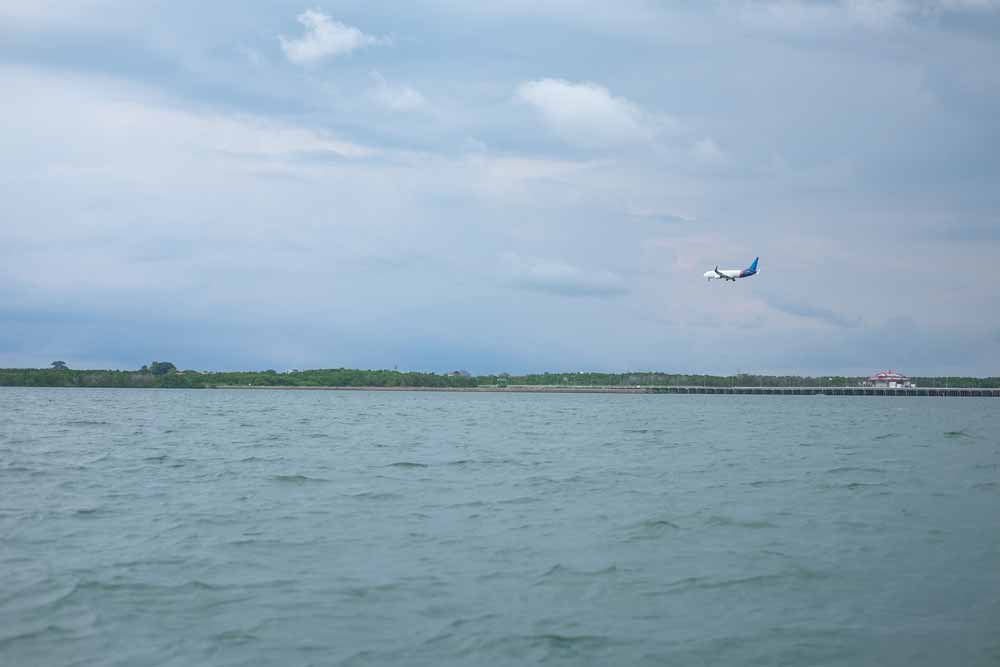
The tour lasts around an hour to an hour-and-a-half, a refreshing trip through the mangroves and across open waters. It’s a great way to support the local fishermen who also organise monthly group clean-ups of the area, collecting any trash and rubbish that might have washed in.
Each jukung can hold up to 3 people, and costs IDR 350.000 per tour. To book your tour you should call a day or two in advance to check what time the waters will be right on your desired day. Flip-flops or sandals are the recommended footwear as you may need to step into the waters momentarily to enter or exit the boat.
Follow them on Instagram: @wanasegarakertih
To book: +6281238917973 Nyoman Sunarta
Or +6282237605669 Ketut Sutarma

